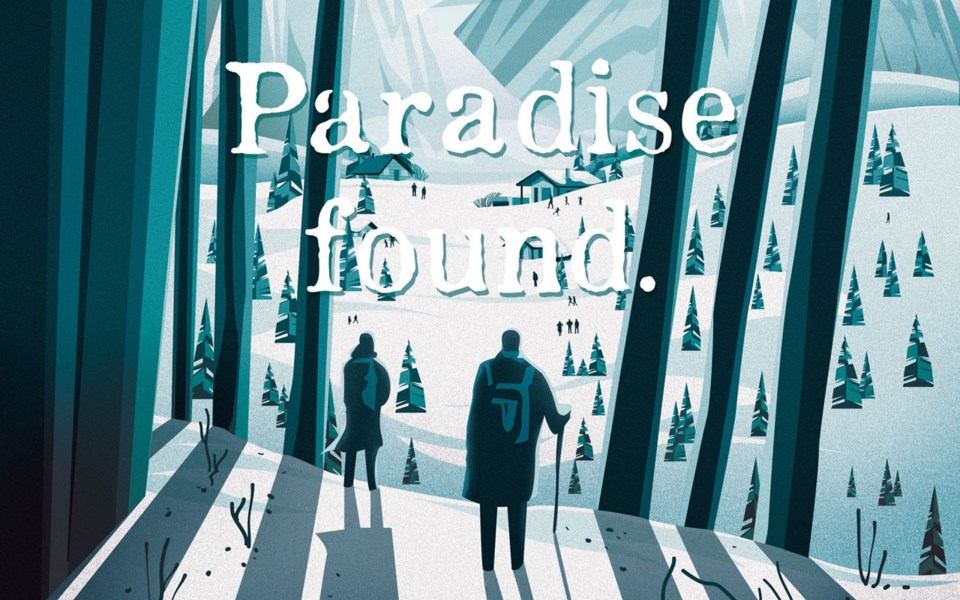
It seemed like a good place to wait out the end of the world.
In the mid-1960s, Lloyd Forman, his brother Dave, and their families were living in Ucluelet when they began to make plans for the impending doomsday.
"It was the '60s and a lot of things were happening," says Lloyd. "We were wrong. I'll quickly acknowledge that. But we were a people of very strong faith. We had been rewarded so much. God rewards faith, not knowledge."
Dave was working at a local mine and had become friends with a man named Jim Barkley. Jim's father, Tom, had built a cat road up to an area in the Cayoosh Range to prospect for copper in 1962. While, ultimately, he never mined the area, he did build a small cabin on the land Jim had described as fertile, beautiful, and remote.
That was all the Formans needed to hear.
In 1966, Lloyd started making plans to pack up his wife and five kids and, along with five other families, make the trip up to what became known as the Barkley Valley.
They had almost no knowledge of the outdoors, but their faith in God was strong enough to convince them they were on the right path.
That path, literally speaking, turned out to be a nearly impassable road that started 42 kilometres northeast of Pemberton, which, at the time, was home to about 100 people and was not yet easily connected to the small community of Alta Lake (now Whistler).
"We weren't even camping people," Lloyd says. "We were city people. We went up with packs with cans. Cans! We were packed with cans because we knew nothing."
Even today, the trail to Barkley Valley is a tough hike. The road, the same one Tom Barkley built, is too steep and washed out in places for a four-wheel truck to navigate. Once you hit the trailhead, the black flies can be horrendous enough to quicken your pace ten-fold.
But, eventually, you come upon the final hill. The valley opens up into a sprawling, green expanse. The mountain sides are cloaked in meadows, presumably thanks to avalanches that long ago ripped up the sub-alpine trees. Wildflowers dot the area and a creek rushes through.
Fifty years earlier, it's the same scene that first greeted Lloyd and the five patriarchs of the families that hoped to call the area home. Before officially moving, the men set out on a reconnaissance mission, just to be sure it was a good fit.
"I remember when we first walked in the valley," Lloyd says. "It was a group of five or six of us guys and we just broke in where it levels out even. And it was ... it was white, white clouds. It was like we walked into a holy spot. The sun broke through and I'll always remember that. It was an unearthly experience."
And with that first view, the deal was sealed.
An untold history
When you first enter Barkley Valley today, you're greeted with a large, green sign that documents some of the area's history—some of the only written history on the area I could find.
The N'Quatqua people have travelled through it for centuries, it says. A pack trail was first established in the 1930s that traversed a route from Anderson Lake to Common Johnny Creek then up to Elliot Creek to mineral prospects in Barkley Valley.
Tom Barkley came next with his cat road in the 1960s. Avalanches flattened his old cabin decades ago. Dozens of mineral claims have been staked since then (a short description from the Ministry of Energy, Mines and Petroleum Resources backs this up).
But then there are the sentences that have captured my imagination for the past two years: "The remaining cabins at this site were built by a religious group comprised of several families who settled here in the 1960s. They hunted, fished, and kept cattle and horses for a few years until the difficulties of such remote living forced them to relocate."
When I first hiked up to Barkley Valley with friends in July 2017, I had no idea what we were in for. We were just itching for an early-season alpine hike and, after studying some maps, it seemed like it might be clear of snow.
The hike in was utter drudgery compared to most in the area; it had been 32 degrees Celsius and the first section on Tom's very washed out and steep road was entirely un-shaded. While the wide, non-technical hike on the trail was a bit more protected, the bugs were incessant and the trees blocked any view.
But, like Lloyd, when that slog opened up into the alpine, I was enamoured.
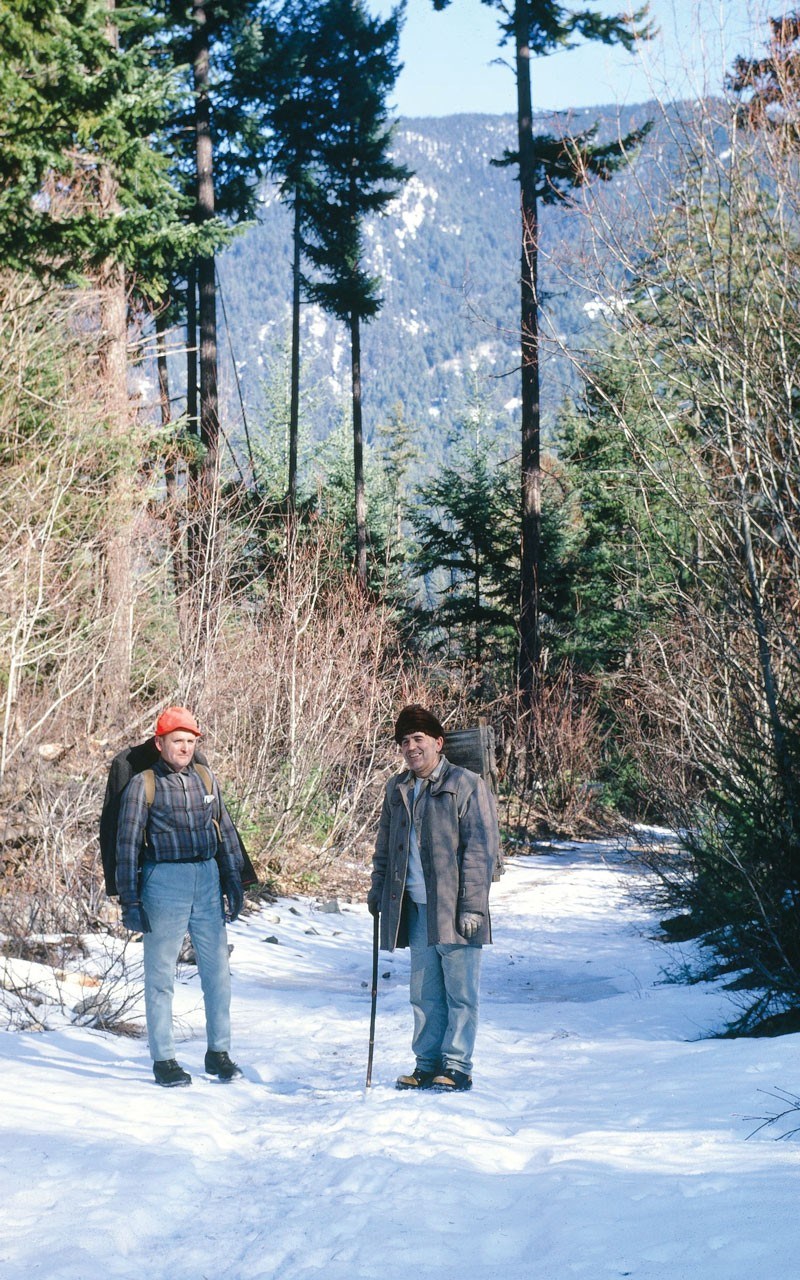
After reading the sign, which appears to have been erected by a local recreation group, though it's unsigned, we noticed flattened bedframes and the remains of cabins in nearby clusters of trees. Did these belong to the mystery religious group?
We discovered a small, newer cabin—more a warming hut than the kind you sleep in—about 50 metres away. Inside, entirely by chance, there were a few more answers.
A large Canadian flag hung from the rafters and, at the top, it read: "50 year anniversary of the original dwellers and families!" Below were dozens of names. Some had scrawled brief memories in black Sharpie, the most captivating of which was, "I WAS BORN HERE!!!"
We spent a lovely weekend hiking and camping around the area. We met one man "glassin' for animals" and another friendly, long-time Devine local who told us about the resident grizzly.
But once we returned home, I couldn't get those settlers out of my head. Of course, I had romanticized their lives—tossing aside the 9-to-5 grind in search of a purer existence that distilled life down to its essentials: gather food, haul water, make fire, spend time with loved ones.
My fascination was further fuelled by the fact that there seemed to be no real written account—on the internet or in any local museums—of anyone living 1,615 metres above sea level in this remote mountain range.
But then I remembered I had snapped a photo of the flag. Surely, one of the people behind those signatures would be on Facebook—even if five decades ago, they might have been luddites.
It didn't take long to track down Sherri Forman, the wife of Jay Forman, who wrote the note on the flag about being born in Barkley Valley.
She replied to my rambling message quickly with a shockingly affable note (considering it's not every day you have a Whistler journalist asking to pry into your family's history), promising to talk to her father-in-law, Lloyd. While she remained friendly to all of my pestering, it took two years of messages to arrange a time to meet with Lloyd, who is now 82 and has called Boston Bar home for nearly 40 years, even serving as chairman of the regional district for a time.
I wasn't sure what to expect from someone who was once part of a religious, mountain-dwelling group. But, on a sunny September morning, I headed up the winding Fraser Canyon, anxious to finally hear his story.
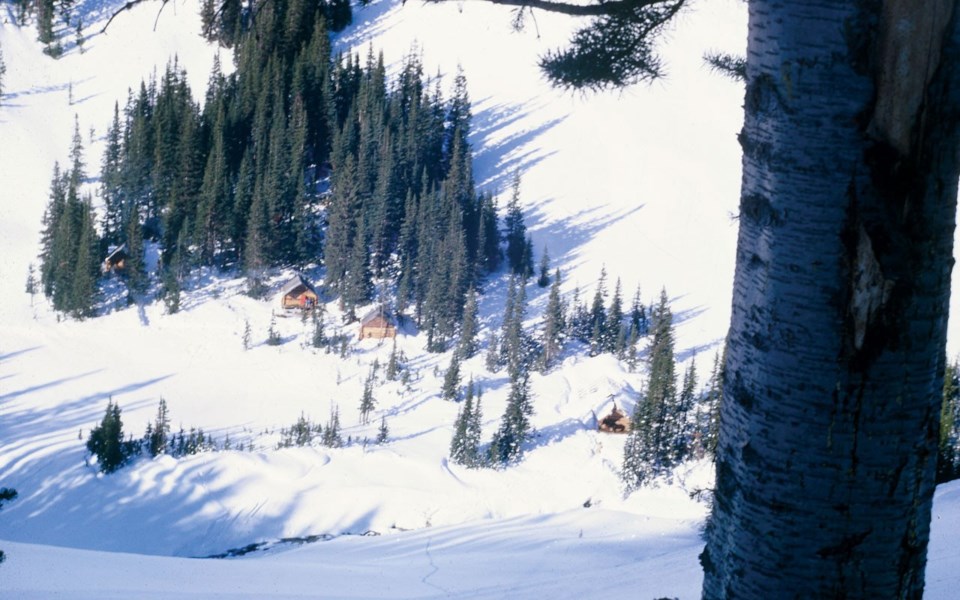
'You're the strangest man I ever met'
Lloyd Forman grew up in Saskatchewan. His father was a CN engineer and a preacher and he and his mother raised the family in the Church of Christ. After his father died in 1945, his mother and siblings ran an old folks home until the provincial government decided they wanted to oversee the facility.
The family moved around a lot—a tradition Lloyd would carry on after marrying his wife, Lillian, and having six kids of his own.
Like his father, he worked for a time at CN. He shares an anecdote that seems to exemplify his life's trajectory.
One day, the company sat him down for an IQ test and after seeing the results, offered to put him through school to become an engineer, all while paying him a wage so he could support his young family.
He turned them down.
"[They] said, 'You're the strangest man I ever met,'" Lloyd says. "I could've been a civil engineer, gone to Montreal and worked for CN. But I said no."
We're sitting at a table in Canyon Lanes, the bowling alley in Boston Bar where Sherri works.
Lloyd is wearing a light blue, button-up shirt, black-rimmed glasses and looks much more like a municipal politician than someone who once took to the woods to live in seclusion.
Over a cup of black coffee, he tells me his life story. While Barkley Valley is a mere 16-month sliver of that tale, in many ways, the experience shaped the rest of his life.
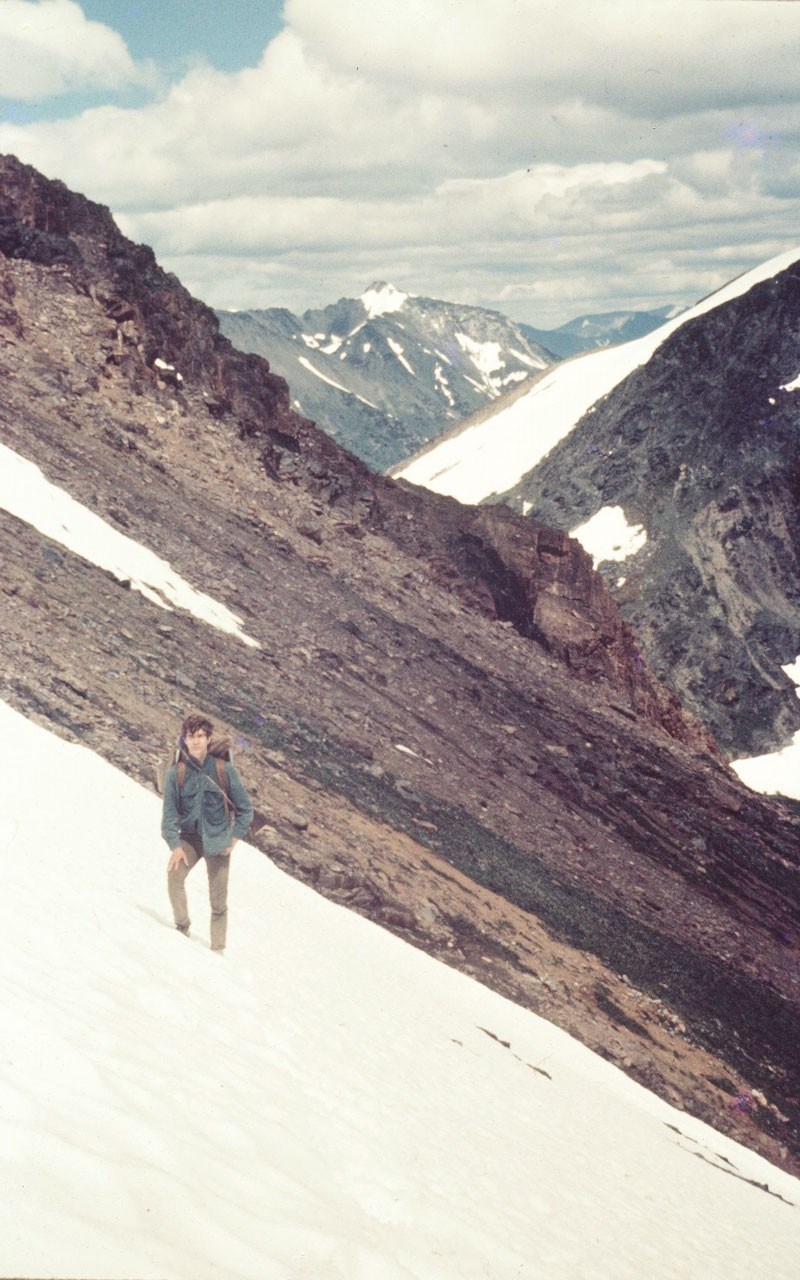
"It was one of the best experiences we could've had," he says. "I was on the regional district and I had business cards made up. I had 'Lloyd Forman, BVE' [put on them]. That stands for Barkley Valley Experience. My son did the same thing in his business because we learned so much. It made us who we are."
Lloyd is a life-long entrepreneur who seized opportunities when they were presented and figured out the rest as he went along. It's almost hard to keep track of the jobs he's held—from running a boys' home to tree planting to trucking.
"If I wake up at 5 a.m. and there's no crisis, I practically create one," he says. "I want to solve problems in an unusual way people normally can't do. That's my personality."
Alongside faith, and a penchant for problem-solving, Lloyd says the other aspect of his personality that allowed him to live at Barkley was a disdain for money and a detachment from material objects.
It's not all that different from the van-lifer movement today: eschew money and creature comforts for a lifestyle in which you believe.
"Even today, I tell people, 'I hate money,'" he says. "Make a list, you'll find all the world's problems are caused by money. That doesn't mean I don't use it. I'm pretty careful with it ... But if you love money, you hate the creator. You can't do both."
To that end, in the summer of 1966, the Forman family, along with three other families, including his brother Dave, his brother John, and their niece, packed up a select few belongings and began the hike up to Barkley Valley.
Between the first trip and the official move, two families dropped out. "They fled for the hills," Lloyd says. "They went to Port Alberni. You had to be a really strong believer. Faith would drive you; nothing else would."
That summer, the families lived in lean-tos while they began constructing four, six-by-six-metre cabins, one per family.
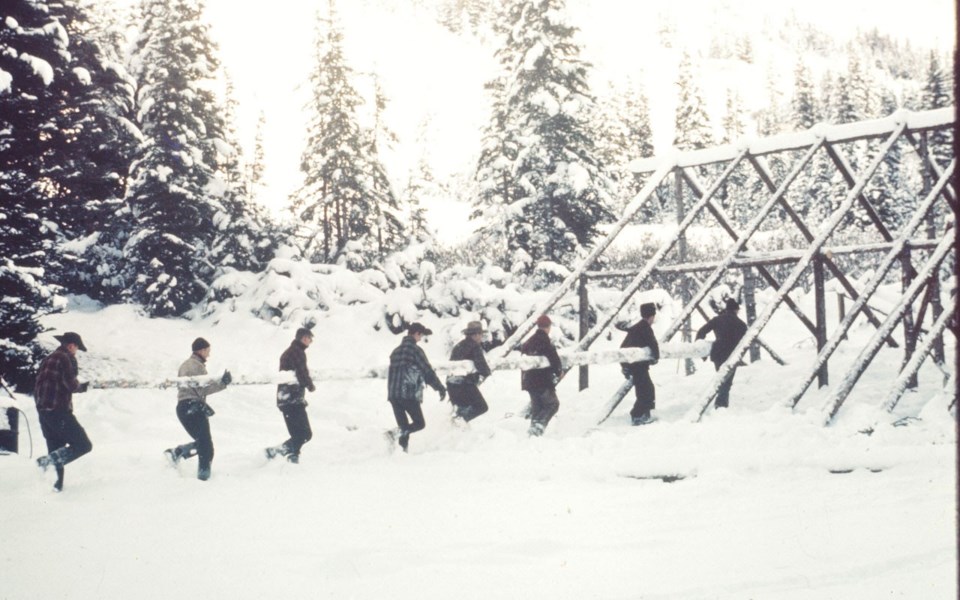
"We had those plywood A-frames the families lived in," Myles Forman, Lloyd's son, tells me over the phone a week after I meet with his father. "Me and my cousins, we had lean-tos built out of branches and stuff. And that's what we lived in—girls in one spot, boys in another—until the cabins were built."
I picture the cabins as haphazardly constructed, cobbled-together structures you'd find in a shantytown. But later, on a disc of photos Lloyd sends me home with, I see they looked like any lakefront log cabin you'd find today.
"We had chainsaws," Lloyd says. "We cut the trees and my son and my brother's son were 12, so they skidded all the logs. Us guys had to put them up. We knew nothing. But we built 20-by-20 [foot] cabins with a loft."
Throughout this time, the men in the families would head down the valley for occasional work. They helped install the sewer line in Tsawwassen, worked at a fish hatchery, and did other one-off jobs so they could buy 100-pound bags of sugar and flour, as well as rice and peas, to bring back home.
"Most of the time, they were home on the weekends, so we got the cabins up and had the ridge poles in, but the roof wasn't on," says Myles, who, it should be noted, was 12 at the time. "I thought, 'OK, dad's working.' I went and took the lumber and put the roof on for him. When I look back at it now, I didn't think anything of it."
The finished cabins had a loft for the kids. In Lloyd's cabin, there was Myles, an 11-year-old daughter, and two boys, ages 10 and 8—with a corner walled off for Lloyd and Lillian's bedroom and another corner blocked for a makeshift bathroom with a bucket to use at night (in addition to an outhouse). They shoved moss into the cracks of the logs, which didn't always insulate perfectly, but a fireplace kept them warm enough.
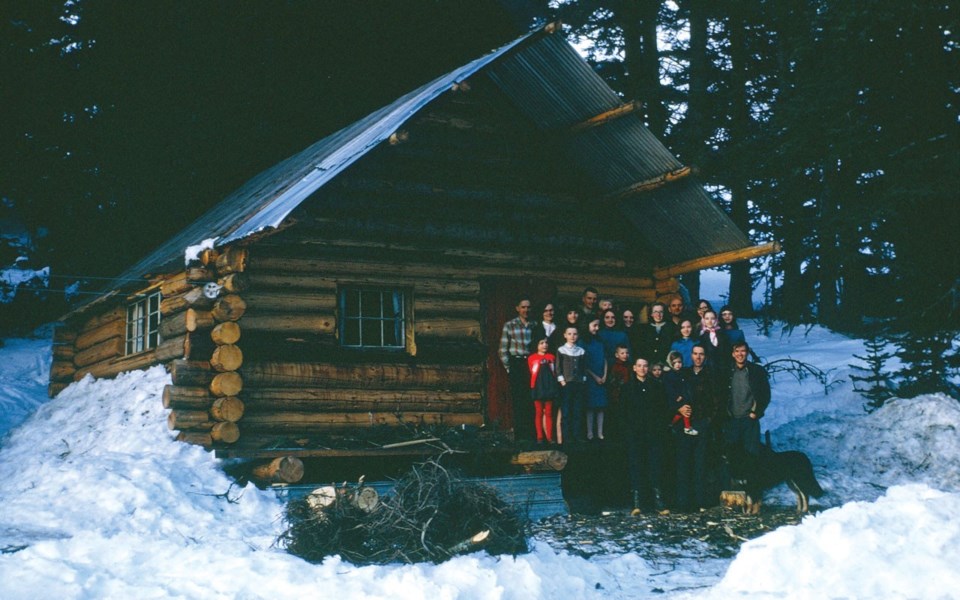
Later, they would bring up horses and, with the help of a stump puller and a little creativity, a Reo truck and—unbelievably—a Studebaker car. But in the beginning, they hauled everything in by foot.
"We had no fat on us at all," Lloyd, who was 30 when they first moved there, says of all the hiking. "I don't know what I weighed then. I'm 180 [pounds] now, back then I was probably about 135."
While the rest of the kids stuck close to the cabins, Myles recalls trying to finish a week's worth of his distance-learning schooling in one day so he could head off into the mountains to hunt goats and explore.
"I was very, very fortunate to have parents that gave me guidelines, but didn't control me," he says, having had seven of his own children. "I was able to make decisions for myself. Some parents want to micromanage what their kids are doing. That doesn't help them develop. Going over those peaks like that at 12 years old, I didn't get into any trouble. I didn't get close to snow-packed edges—they might let go and who's going to find me? They're not going to find me because I don't even know where I'm at. It was awesome to have that kind of freedom at that age. When I look back on it, I don't know if there's anything you can compare it to."
Birthing pains
By the time winter set in, the cabins were fully built and two of the four wives were pregnant.
With Whistler's snow-safety culture deeply ingrained in my mind, I had one nagging question for Lloyd: how did no one die in an avalanche? On our 2017 trip to the area, the lingering snow from an avalanche stopped just short of the current cabin.
Eventually, in the years after they left, avalanches did overtake their cabins, but the one winter they spent at Barkley saw little snow. "It was a perfect winter," Lloyd says. "The first of January, we had nothing. The chief from D'arcy said if we don't have a snowfall by the 21st of January, there won't be one."
Myles—who perhaps kept this story from his dad at the time—remembers a few close calls. "Where the shelter is now, when you look up to the right, the snow chute there, me and my brothers and cousins, maybe we were tobogganing, a snow slide came down, so we started running. It was only 18 inches high, but [my brother] lost his boots in it. We found them later. Another time ... we watched a slide come down there. It was a big wall of snow that came all the way to the creek. The powder was 200 feet high. We didn't know if it was going to get us or not."
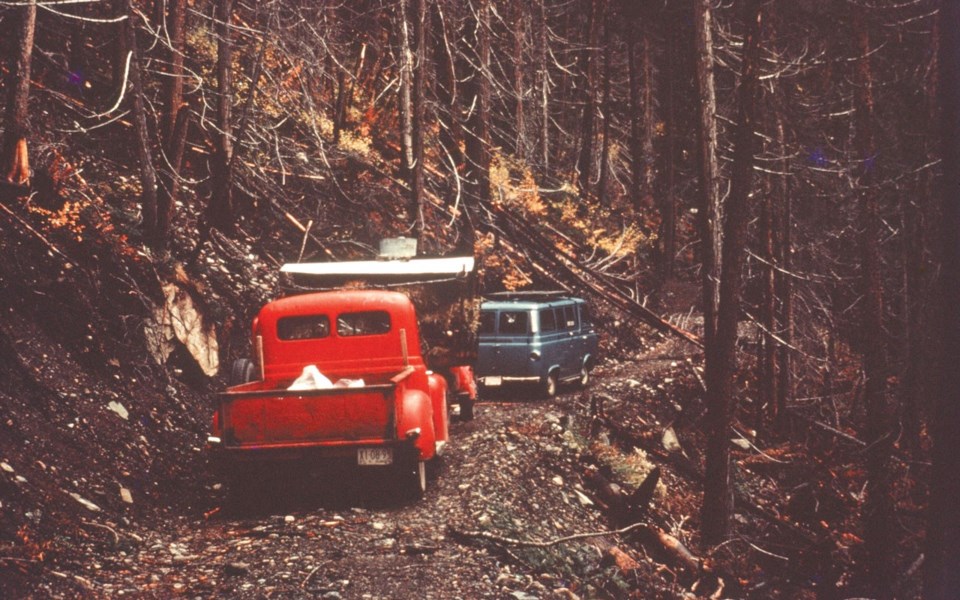
Lloyd remembers exactly when the first snowfall of the season happened that year, in 1967.
"That was the 18th, when Jay was born. We got that snowfall," he recalls.
To modern ears, the story of Jay Forman coming into the world is a harrowing one. First off, he was nine weeks early. With the five other kids, Lillian went to the hospital and, as was customary at the time, Lloyd would pick her up with the newest family member in tow.
This time, it was different.
"She's half sitting up in bed with The Canadian Mother and Child [book, first published in 1940], instructing me. It was blizzarding out. The snow was sifting through above our heads—we just used moss to seal the logs. Snow's dripping through and she's directing me. Finally, he comes and he looks like a piece of marble—and dead. So, I threw him on the bed [to help Lillian]. All of a sudden, he squeaks. 'He's alive!' So we grab him, wrap him up and everything. For six weeks, he slept between us in a Gainers meat box with two hot water bottles. His own incubator," he says.
Jay—like the other baby, who ended up being born a month late—was just fine. In fact, a doctor from Vancouver who was an avid hiker had caught wind of a baby born up in the valley and, that April, decided to investigate.
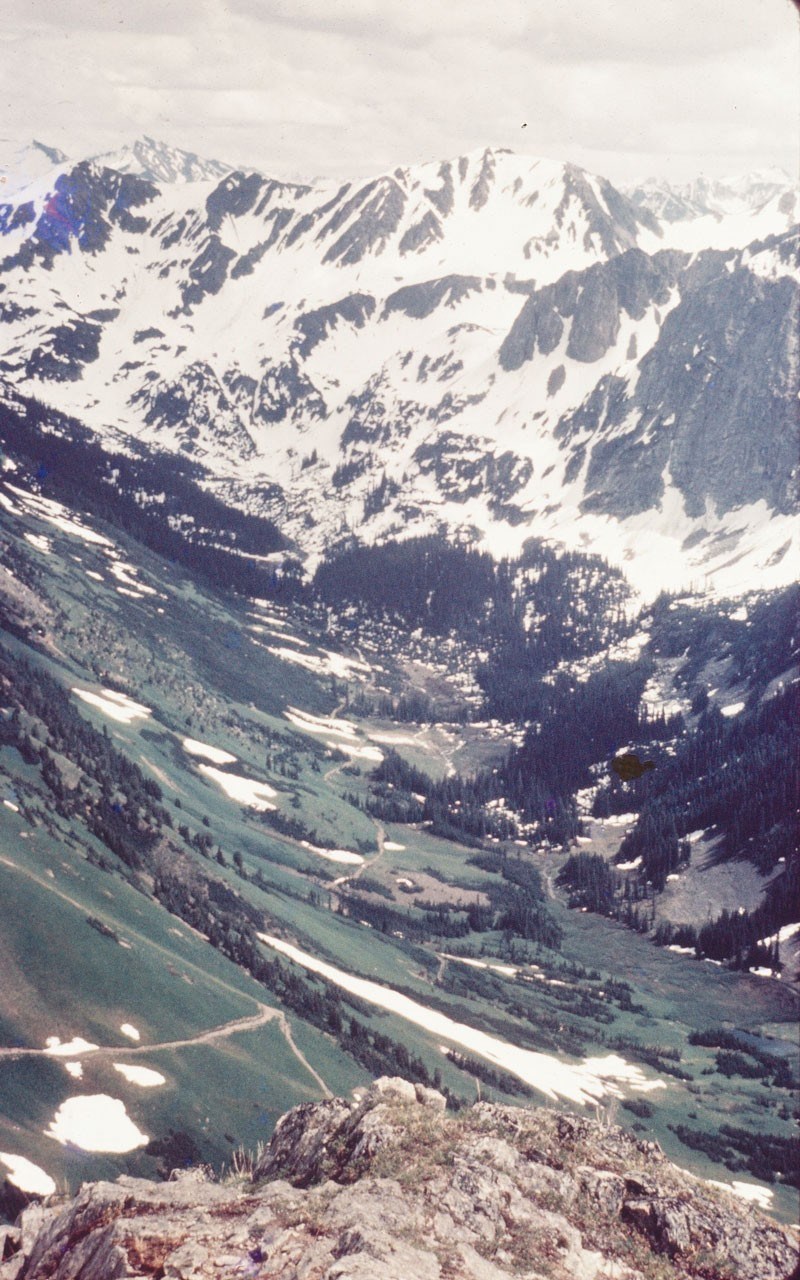
"He said, 'I heard you had a baby? Can I take a look?'" Lloyd remembers. "I said, 'Sure.' He said, 'You know what? He did better here than at Vancouver General. What happens to the premies is he's used to your germs, but the other germs, that's a problem.'"
It wasn't the only time authorities came to check on the families. Word around Pemberton spread quickly that there were people living up in the mountains near Devine.
"People thought they were a little bit crazy for sure," says Bob Menzel, whose family was one of the first non-Indigenous families to settle in Pemberton. "We used to see them in town. They had an old four-wheel-drive truck."
Menzel knew the area well. He used to ride horseback through Barkley Valley and its neighbouring Melvin Creek to get to Duffey Lake. At that time, it was the only route to the lake and it took two days on horse.
"The reason most people knew it wouldn't work out was because it was such a short summer, then there were avalanches in the winter," he says. "It's pretty open, dangerous avalanche country. In those days, people didn't think about avalanches."
The family, especially the men who would head into town for work, weren't recluses. Lloyd remembers having coffee at the Pemberton Hotel.
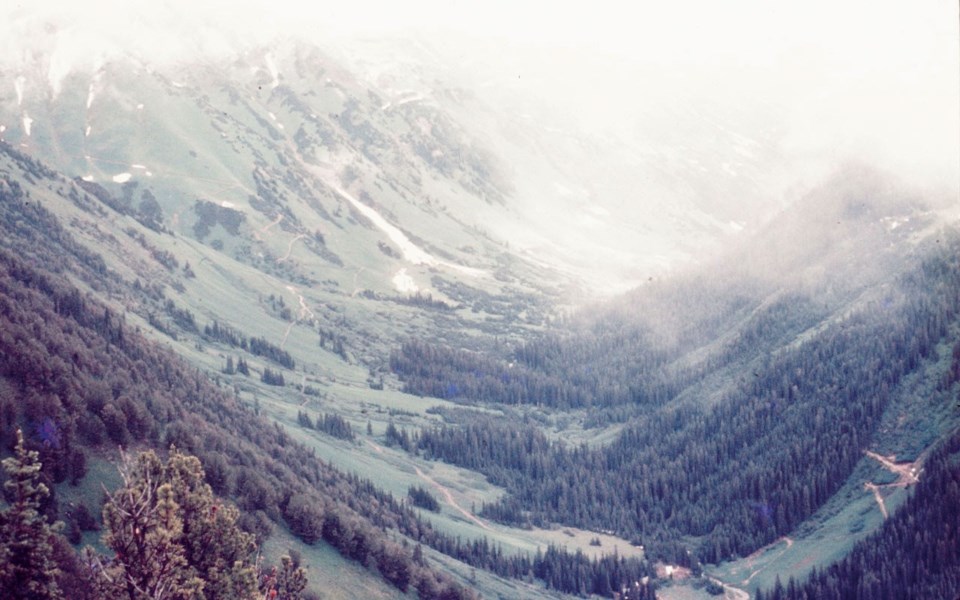
"We were chatting to the waitress, and she said, 'Oh, do you know those people up there?' I said, 'I are those people!' She said, 'No you're not! You work for BC Tel!'"
That spring, some mountaineers from Whistler, as well as a police officer, put on cross-country skis with skins and made their way to Barkley Valley to check on the group. "We heard they were coming, so we shovelled," Lloyd says. "We got shovels and we shovelled two miles of road eight-feet wide. They hardly made it up. They had sealskin on their skis. But everybody was happy, everything was well."
While they never established a garden—there wasn't enough time, Lloyd says—the family ate well, thanks to the four head of cattle they herded up. It was Myles' job to milk them every day at 7 a.m. and 7 p.m. He was so devoted to this task that one day, after wandering into the mountains, the family began to worry when he hadn't returned by 6:55 p.m. (Lloyd had bought him a watch for this exact reason).
"He'd gone over two 8,000-foot ranges," Lloyd says. "Above the cabin on the south side, there was a big snow chute there and I [saw] a dark speck and then he sat down and slid down about 2,000 feet of snow. He came running back to the creek."
The family also hunted—something Lloyd says he only did for sustenance. "We shot a couple bears," he recalls. "They actually had an old goat carcass they were chewing on down the road. I remember packing them up. We put poles between them and it was a long night. We would stop and lean against the bank, watching the stars and resting. And then we went up into the Melvin Valley and we shot seven goats. The goat meat was good, the bear meat—it was fine for us. We enjoyed it. It depends on your circumstance."
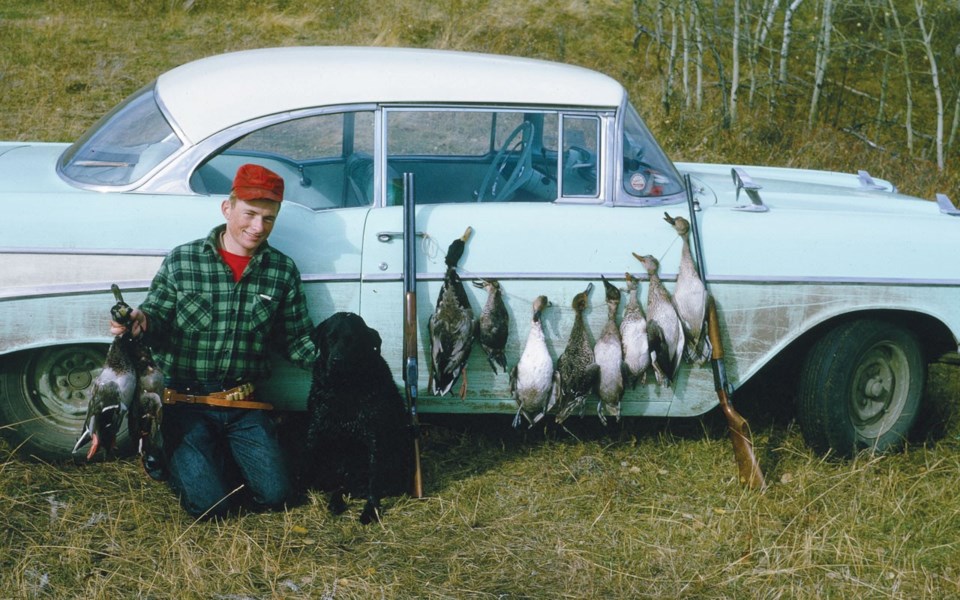
The end of an era
By 1967, circumstances had changed. The world had not ended, as they envisioned. While the rumour around Pemberton is that officials forced them out of the valley, Lloyd says they simply decided to seize on a new opportunity.
The man who had been running the hatchery they worked at was looking for someone to take care of his ranch near Keefers, B.C., just north of Boston Bar. "When we had the chance to leave that next fall and go to Keefers, that's what we did," Lloyd says.
He doesn't remember feeling sentimental about the decision, but Myles does. Even at his young age, he could sense there wouldn't always be a time when a family could just pick up, move into the mountains and be left alone.
"I felt, at the time, we were kinda at the tail end of that type of thing, which was the sad part of it. That's why I have empathy. People say, 'There's crazy people living in the bush.' As far as I'm concerned, I'd do it again. Our society wants to control that. I think that's wrong. When I look back at what we did then, none of us came to harm and we were all healthy. Society wouldn't allow that because they'd think there's something wrong. The kids were being abused, not taken care of or being fed," he says.
For his part, Lloyd says their plan for moving into the mountains might have been flawed, but the life and lessons they packed into those 16 months were not a mistake.
"John [my brother], he'll be 90 in November. He's eight years older than me. He told me 10 years ago he realized the value of what we did," he says. "It took him to age 80. So I phoned him last week. He and I are the only living ones left of the original family heads. I said, 'I'm going to be meeting this young lady and I'm going to tell her we made a mistake in our thinking.' He said, 'We didn't make a mistake.' I said, 'Yes, we did because we were talking timing [of the world ending].' Now, the way I view it is that's what we had to think in order to experience it. It was a wonderful experience. It just was."
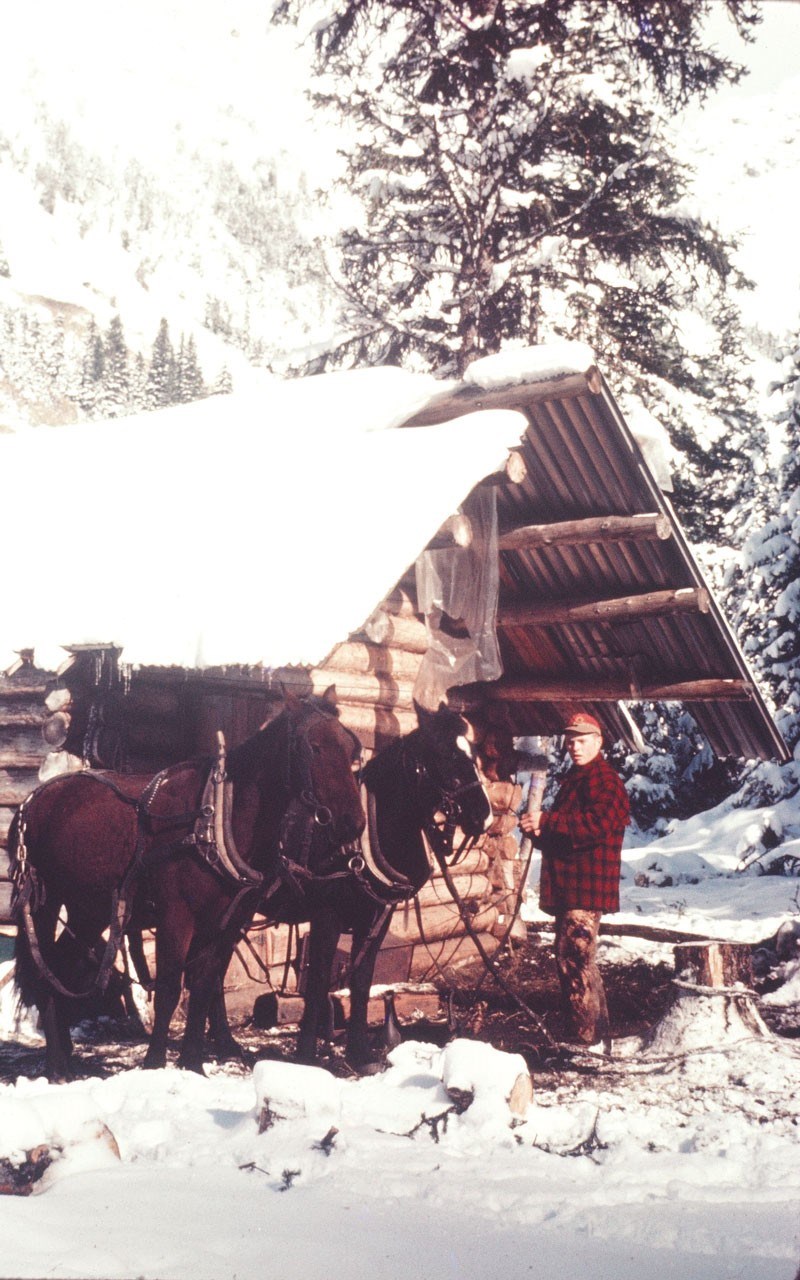
The simple life
The Formans went back to visit Barkley about half a dozen times after they moved. Lloyd and Lillian have somewhere between 150 and 160 grandkids and great grandkids today. They pass on the story as best they can.
But they decided the 50th anniversary was a worthy reason to bring some of their family members up there.
"My wife had just had open heart surgery the year before," Lloyd says. "We took a picture—Jay took it and enlarged it and framed it. It's on my living room wall. I'm holding her hand and we're walking toward where the old cabin site was. I said, 'Look it! We're just a couple of old geezers checking out where we used to live 50 years ago.'"
While the couple has been in Boston Bar for four decades now, Lloyd still dreams about moving somewhere more remote and self-sustained.
A real estate listing came up this year for a property halfway between Williams Lake and Quesnel. Six Americans moved there in 1976 and built a homestead with six houses and a two-bedroom guest apartment.
"They've got a music room, art room, a carpenter shop, machine shop," Lloyd says. "And it's fully serviced. Each one has its own water supply and high-speed internet, so they can have a business."
He continues: "If I was younger, I would still find a place to do [what we did at Barkley] today ... People should be able to live a simple life. They should be entitled to it."



